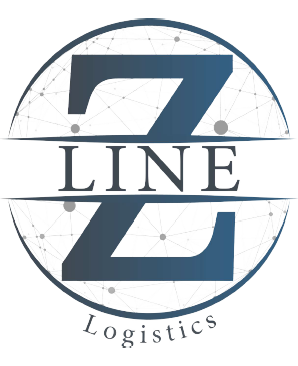Have you ever wondered about the intricate process that ensures your favorite products are always available on store shelves? The answer lies in a crucial business practice known as stocktaking. But what is the difference between stocktaking and stock checking?
Stocktaking involves a comprehensive physical count of all inventory items, while stock inspection focuses on specific items or categories.
Stocktaking is less frequent but provides a detailed snapshot of inventory levels. Stock checking is more frequent and helps identify discrepancies and optimize inventory levels.
In this blog post, we’ll delve into the world of stocktaking, exploring its meaning, significance, and the key differences between stocktaking and stock checking.
Table of Contents
What is Stocktaking?
Stocktaking, also known as inventory counting, is a crucial business process involving the physical counting and valuation of all goods in a company’s inventory.
It’s a systematic way to ensure accurate records and identify any discrepancies between physical stock and recorded stock levels.
Methods of Stocktaking
- Periodic Stocktaking: This traditional method involves physically counting all inventory items at regular intervals, such as monthly, quarterly, or annually. It’s a time-consuming process but provides a comprehensive overview of inventory levels.
- Perpetual Inventory System: This method involves continuous tracking of inventory levels using barcode scanning or RFID technology. It provides real-time updates on stock levels, enabling businesses to make informed decisions about purchasing and production.
- Cycle Counting: This method involves counting a small portion of the inventory on a regular basis. It’s a more efficient approach than a full physical count and can help identify discrepancies early on.
- Physical Verification: This method involves physically verifying the existence and quantity of inventory items, often used in conjunction with other methods to ensure accuracy.

Learn more: The Positive and Negative Impacts of the Amazon Effect on Freight in Dubai
Types of Stocktaking
Stocktaking can be conducted in various ways. Let’s delve into the primary methods:
1. Annual Stocktaking
This traditional method involves a complete physical count of all inventory items once a year. It’s often used for financial reporting purposes and to ensure accurate inventory valuation.
2. Periodic Stocktaking
Periodic stocktaking involves physical counts at regular intervals, such as monthly, quarterly, or semi-annually. This method helps maintain inventory accuracy and identify discrepancies early on.
3. Continuous Stocktaking
This modern approach utilizes technology like barcodes and RFID to track inventory levels in real-time. It provides up-to-date information on stock movements, enabling businesses to make informed decisions and prevent stockouts or overstocks.
4. Cycle Counting
Cycle counting involves physically counting a small portion of inventory items on a regular basis. This targeted approach helps identify discrepancies and maintain accurate inventory records without disrupting daily operations.
5. Spot Checks
Spot checks are random, unscheduled counts of specific inventory items. They are useful for detecting discrepancies and ensuring inventory accuracy, especially in high-value or high-theft items.
For more information: Embracing Green Last-mile Delivery in Dubai for 2024
Pros and Cons of Stocktaking
Stocktaking is a crucial process for businesses of all sizes. While it provides a comprehensive overview of inventory levels and identifies discrepancies, it can be time-consuming and disruptive to daily operations.
Pros of Stocktaking
- Accuracy: A full stocktake provides a detailed and accurate snapshot of your inventory. This helps identify discrepancies, such as overstocks or shortages, which can lead to better inventory management.
- Financial Accuracy: Accurate inventory counts are crucial for financial reporting. They help you calculate your cost of goods sold (COGS) accurately, which directly impacts your bottom line.
- Loss Prevention: Regular stocktakes can help identify theft or shrinkage, allowing you to take preventive measures.
- Improved Decision Making: Accurate inventory data helps you make informed decisions about purchasing, production, and sales.
- Compliance: Some industries have specific regulations regarding inventory management, and accurate stocktaking helps ensure compliance.
Cons of Stocktaking:
- Time-Consuming: Full stocktakes can be time-consuming, especially for businesses with large inventories.
- Disruptive to Operations: It can disrupt daily operations, especially if it involves closing down parts of the business.
- Labor-Intensive: Requires significant manpower to count and record inventory.
- Costly: Can be expensive, particularly if you need to hire additional staff or outsource the process.
- Human Error: Human error can lead to inaccuracies in the stocktaking process.

Learn more: What are the 4 Pillars of Global Sourcing?
The Difference Between Stocktaking and Stock Checking
Stocktaking and stock inspection are two crucial inventory management practices, often used interchangeably but serving distinct purposes. Here is the difference between stocktaking and stock checking
;
| Feature | Stocktaking | Stock Checking |
|---|---|---|
| Scope | Comprehensive physical count of all inventory | Focused on specific items or categories |
| Frequency | Periodic (e.g., annually, semi-annually, quarterly) | Continuous or frequent intervals |
| Disruption | Can be disruptive to daily operations, especially for large-scale stocktakes | Minimal disruption to daily operations |
| Cost | Higher cost due to labor, resources, and potential business downtime | Lower cost, as it often involves fewer resources and less time |
Read more: Exploring Global Sourcing Advantages and Disadvantages
In conclusion, stocktaking and stock checking are essential tools for businesses of all sizes. By understanding the difference between stocktaking and stock checking, businesses can optimize their inventory management, reduce costs, and improve customer satisfaction.
As technology continues to advance, businesses can leverage innovative inventory management software to streamline their processes and gain valuable insights. Visit our website today to learn more about how Z Line Logistics can help you optimize your inventory management.




